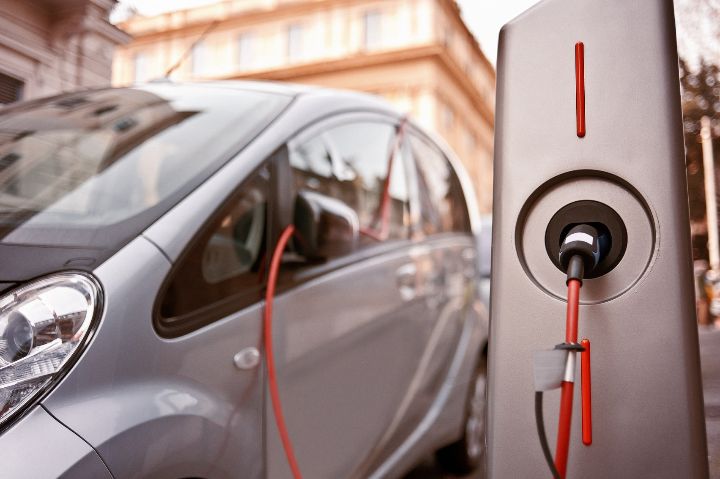1. Climate change and transport emissions
The Scottish Government has committed to achieving net zero emissions by 2045. The largest contributor of Scotland's greenhouse gas (GHG) emissions is transport. According to the latest figures from 2018, transport accounted for 36% of total emissions.
The UK and Scottish Governments have committed to phasing out polluting vehicles.
- From 2030, a ban on the sale of vehicles with an internal combustion engine will come into effect
- From 2035, a ban on the sale of hybrid cars and vans will follow
Transport Scotland estimates that between 500,000 and 1 million EVs will be on Scotland’s roads by 2030. This will require approximately 30,000 charge points.
Scotland’s infrastructure optimisation and grants will total £1.8 billion. The UK Government has also committed nearly £500 million in funding to support 169,000 jobs nationally.
 Electric vehicle plugged into EV charge point
Electric vehicle plugged into EV charge point